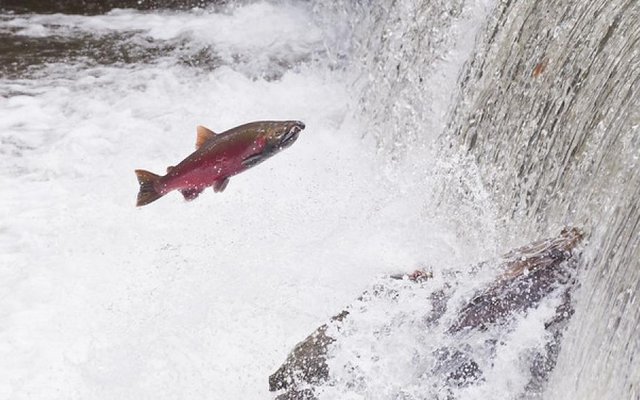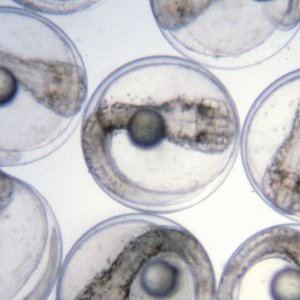A new study of the genetic profiles of wild and hatchery coho salmon demonstrates important distinctions in how the two types of fish form mating pairs. These findings by Oregon State University researchers provide new insight into subtle differences between wild and hatchery fish that could lead to changes in how hatchery fish are mated to promote the success of hatchery fish and conserve and protect wild fish.
Wild coho salmon are listed as threatened under the U.S. Endangered Species Act throughout much of their range. Efforts 40 years ago to bolster the abundance focused heavily on producing hatchery fish, but wild salmon proved better at reproduction than those from hatcheries. Researchers also found that hatchery-spawned fish may have a negative impact on wild fish and their ability to reproduce.
“It has been demonstrated across four salmon species that hatchery fish that breed in the wild are not as viable as wild fish. And should they breed with wild fish, there is a risk of drawdown of the number of offspring that result from wild fish,” said co-author Michael Banks, a fisheries genomics, conservation and behavior professor in OSU’s Department of Fisheries, Wildlife, and Conservation Sciences and the Coastal Oregon Marine Experiment Station at OSU’s Hatfield Marine Science Center. “What we’re trying to find now is a way to make a better hatchery fish that doesn’t have drawdown impacts on the wild fish.”
Using genetic material collected from fin clips, researchers conducted genotype sequencing of hundreds of wild and hatchery fish. They found that both hatchery and wild fish tend to demonstrate negative assortment, meaning they look for mates that are different from themselves, genetically. Negative assortment is a common finding in mating because mating for difference is a way to improve resistance to disease, Banks said.
But researchers found that hatchery fish and wild fish demonstrate negative assortment at different genetic markers. And while researchers have identified these differences, they still don’t know much about many of these genes associated with negative assortment.
Using information from this study and previous work, researchers are now trying to better emulate the natural mating of coho salmon in a hatchery environment. Working out of the Sandy Hatchery on Cedar Creek, researchers are collecting tissue samples from fish that have returned to spawn and then attempt to find genetic matches similar to those found among wild fish.
For each female, they split the eggs into two batches. Half of the eggs are fertilized with a randomly selected male, as is typical for hatchery practice; the other half are fertilized with a “best” male selected based on genetic profile information as observed from wild fish mating in a natural context.
“We are doing a directed spawn where we are trying to emulate nature,” Banks said. “This is not a simple feat because we observed from nature that most genes are associated with choosing a mate that is different, but also some genes are associated with choosing something similar. We are not familiar with other breeding attempts that invoked both disassortive as well as assortive strategies within the same mating decisions.”
Researchers will return soon to the hatchery to mate fish again for the third year of the three-year experiment. This is also the first year they expect to encounter the first returning jacks, or young male salmon, from the first year of their experiment.
“Some of the jacks will be starting to come back this year, and we expect all returns from next fall through 2025 will be from our experiment,” Auld said. “We will continue to keep taking genetic samples throughout that period to determine if this process was successful. Depending on what we find, this could potentially alter how we mate hatchery fish. And it may result in hatchery fish that are more like wild fish and have less impact on wild fish.













